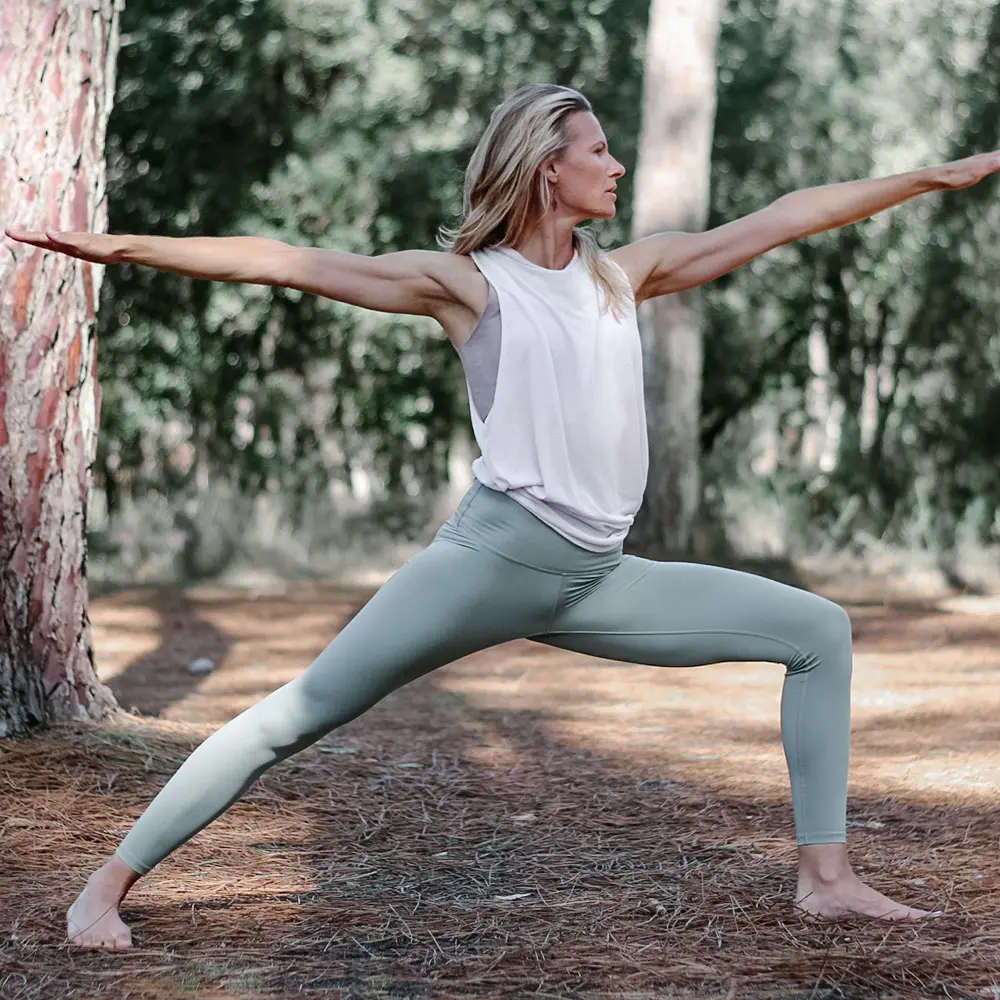I. Introduction

A. An Overview of Yoga and Its Health Benefits
How many calories do you burn doing yoga? Yoga is an ancient practice that has gained immense popularity in modern times for its holistic approach to health and well-being. It encompasses physical postures, breathing exercises, and meditation techniques, offering a broad range of health benefits. These benefits include improved flexibility, strength, balance, and mental clarity. Additionally, yoga has been found to reduce stress, alleviate anxiety, and promote overall feelings of wellness.
B. The Link Between Yoga and Caloric Expenditure
While yoga is often associated with relaxation and mindfulness, it also has the potential to contribute to caloric expenditure and weight management. Various factors influence the number of calories burned during a yoga session, and understanding these factors is essential for individuals looking to incorporate yoga into their fitness routines and achieve their weight management goals.
II. Factors Affecting Caloric Burn in Yoga
How many calories do you burn doing yoga? While yoga may not be as high-impact as other forms of exercise, it can still contribute to the overall caloric expenditure. The number of calories burned during a yoga session can vary depending on several factors, including the intensity and type of yoga practice, body weight and muscle mass, and the duration of the session.
A. Intensity and Type of Yoga Practice
The intensity and type of yoga practice significantly impact the number of calories burned. For example, vigorous styles such as power yoga or hot yoga typically involve more dynamic movements and sustained poses, leading to higher energy expenditure. In contrast, gentle forms of yoga, such as restorative or yin yoga, may result in lower caloric burn due to their focus on relaxation and stretching.
B. Body Weight and Muscle Mass
Individual body weight and muscle mass play a role in determining caloric expenditure during yoga. Heavier individuals and those with greater muscle mass generally burn more calories during physical activities, including yoga. Additionally, the engagement of muscles during yoga poses can contribute to the overall energy expenditure, making it an effective method for maintaining muscle tone and strength.
C. Duration of the Yoga Session

The duration of a yoga session influences the total energy expenditure. Longer sessions naturally result in a higher caloric burn. While many yoga classes typically last between 60 to 90 minutes, even shorter practices can contribute to overall energy expenditure and metabolic activity. Understanding the relationship between session duration and caloric burn is essential for individuals seeking to optimize the benefits of their yoga practice.
These factors collectively determine the caloric expenditure during yoga, and individuals can make informed decisions about their practice based on these considerations. Yoga’s ability to contribute to weight management and overall physical health makes it an attractive option for individuals pursuing a balanced and sustainable fitness routine.
III. Calculating Caloric Expenditure in Yoga
A. Understanding METs (Metabolic Equivalents)
How many calories do you burn doing yoga? Metabolic Equivalents, or METs, are a measure of the energy cost of physical activities. One MET is equivalent to the amount of energy expended at rest, which is approximately 3.5 milliliters of oxygen per kilogram of body weight per minute. Different yoga poses and sequences have varying levels of intensity, which are expressed in terms of METs. For example, gentle hatha yoga may have a MET value of 2.5, while vigorous power yoga may have a MET value of 6.0 or higher.
By understanding the MET values of different yoga practices, individuals can estimate the caloric expenditure based on their body weight and the duration of their yoga session. However, it’s important to note that MET values are general estimates and may vary depending on individual fitness levels and specific variations of yoga poses.
B. Using Heart Rate Monitors for Accurate Measurement
While MET values provide a broad estimate of caloric expenditure, using heart rate monitors can offer a more accurate measurement of energy expenditure during yoga. By monitoring heart rate during a yoga session, individuals can determine the intensity of their practice and calculate the calories burned more precisely.
Many modern fitness trackers and smartwatches come equipped with heart rate monitoring capabilities, making it easier for yoga practitioners to track their workouts. By inputting personal data such as age, weight, and heart rate into specialized calculators, individuals can get a more precise estimate of the calories burned during their yoga practice. This personalized approach takes into account individual differences in fitness levels and can help tailor the yoga practice to meet specific fitness goals.
C. Calorie Calculators and Estimation Tools
In addition to heart rate monitors, there are various online tools and smartphone apps that offer calorie calculators specifically for yoga. These tools often take into account the type of yoga practice, duration of the session, and individual biometric data to provide a personalized estimate of caloric expenditure.
While these calculators can be useful, it’s important to remember that they are still estimates and may not account for all factors that contribute to energy expenditure during yoga. Individual differences in body composition, fitness levels, and effort exerted during practice can all influence the actual calories burned.
IV. Average Caloric Expenditure in Different Yoga Styles
A. Hatha Yoga
How many calories do you burn doing yoga? Hatha yoga is a gentle and slower-paced style of yoga that focuses on basic poses and breathing exercises. The caloric expenditure in Hatha yoga is typically lower compared to more vigorous styles, with an average of 175-298 calories burned per hour for a person weighing 125-185 pounds.
B. Vinyasa Yoga
Vinyasa yoga, also known as flow yoga, is a more dynamic and fast-paced style of yoga that involves continuous movement between poses. The caloric expenditure in Vinyasa yoga is higher than Hatha yoga, with an average of 430-575 calories burned per hour for a person weighing 125-185 pounds.
C. Power Yoga
Power yoga is a more intense and physically demanding style of yoga that focuses on strength and conditioning. The caloric expenditure in Power yoga can be even higher, with an average of 475-675 calories burned per hour for a person weighing 125-185 pounds.
V. Maximizing Caloric Burn in Yoga
A. Incorporating Strength-Building Asanas
While yoga is often associated with flexibility and relaxation, it also offers a plethora of strength-building asanas that can help increase muscle mass and boost caloric burn. Poses such as Chaturanga, Warrior II, and Boat pose activate and engage major muscle groups, resulting in increased caloric expenditure. By incorporating these strength-building asanas into your yoga practice, you can enhance the overall intensity of your workout and maximize caloric burn.
B. Adding High-Intensity Interval Training (HIIT) Elements
High-Intensity Interval Training (HIIT) involves alternating between short bursts of intense activity and periods of less intense activity or rest. By integrating HIIT elements into your yoga practice, such as performing quick and intense sequences followed by brief periods of rest or active recovery, you can elevate your heart rate and significantly increase caloric expenditure. Additionally, incorporating HIIT into yoga sessions can also lead to improvements in cardiovascular endurance and overall fitness.
C. Enhancing Flexibility and Active Flow
Enhancing flexibility and active flow in yoga can also contribute to maximizing caloric burn. Dynamic and active sequences such as Sun Salutations or Vinyasa flows require continuous movement and engagement of various muscle groups, leading to an increased energy expenditure. By focusing on fluid and continuous movements, as well as incorporating challenging poses that require balance and stability, you can enhance the overall intensity of your yoga practice and elevate caloric burn.
In conclusion, yoga can be an effective form of exercise for burning calories and improving overall fitness. By understanding the MET values of different yoga poses and styles, using heart rate monitors, and utilizing calorie calculators, we can better estimate the caloric expenditure during a yoga session. Whether you prefer a gentle Hatha practice or a more intense Power yoga session, incorporating yoga into your fitness routine can contribute to a healthy and active lifestyle.

